Effect of Ultrasonic Assisted Salting on Quality of Microwave Snakehead Fillet
-
摘要: 为研究超声辅助腌制对微波乌鳢鱼片风味的影响,本文以乌鳢为研究对象,优化了超声辅助腌制乌鳢鱼片的条件,随后进行微波熟化鱼片的电子鼻、电子舌、挥发性风味物质含量以及游离氨基酸物质含量的测定。结果表明,超声辅助腌制最佳条件为盐浓度4 g/mL,固液比 1:4 g/mL,恒温(24±1)℃,超声频率40 kHz,超声功率200 W,超声时间60 min。在电子鼻及挥发性风味物质分析中,超声腌制处理有效抑制了微波熟化鱼片中有机硫化物的生成,并使5种挥发性物质(醇类、醛类、酮类、酸类和酯类)含量上升。在电子舌和游离氨基酸物质含量分析中,超声腌制处理对酸味和苦味响应度最低,对咸味、鲜味和甜味的响应度最高,且超声处理能提高13种游离氨基酸的含量。超声及腌制处理使得微波熟化鱼片的风味更佳。经过双因素方差分析发现,超声处理对气味的影响更为显著,腌制处理对滋味的影响更为显著。该研究结果对工业化生产预制调理水产品提供了理论支持。Abstract: In order to study the effect of ultrasound-assisted salting on the flavor quality of microwave heating snakehead fillet, the parameters of ultrasonic and brining of snakehead fillet were first investigated, then the electronic nose, electronic tongue, volatile substances and free amino acid substance of microwave heated snakehead fillets were determined. The results showed that the optimum parameters of ultrasound-assisted brining were as follows: Salt content 4 g/mL, solid-to-liquid ratio 1:4 g/mL, constant temperature (24±1) ℃, ultrasonic frequency 40 kHz, ultrasonic power 200 W and ultrasonic time 60 min. In electronic nose and volatile flavor substances analysis, ultrasonic assisted salting treatment effectively inhibited the formation of organic sulfide and increased the contents of five volatile substances (alcohols, aldehydes, ketones, acids and esters) in microwave heated fillets. In electronic tongue and free amino acid substance content analysis, the response of ultrasonic assisted salting treatment to sour and bitter taste was the lowest, and the response to salty, umami and sweet taste was the highest. And the ultrasonic treatment increased the contents of 13 free amino acids of microwave heated snakehead fillet, suggesting the improvement of flavor and taste. Two-factor analysis of variance found that ultrasonic treatment had a more significant effect on flavor, and salting treatment had a more significant effect on taste. The results of this study provide theoretical support for the industrial production of prefabricated aquatic products.
-
乌鳢(Channa argus)属鲈形目,攀鲈亚目,鳢科,鳢属,又称乌鱼、黑鱼、蛇头鱼,肉食性鱼类[1]。2021年全国的乌鳢总产量超过54.85万吨[2]。现有的乌鳢加工产品主要是采用切片、腌制、速冻工艺制备的预调理乌鳢鱼片,解冻后进行简单热处理即可食用,市场前景广阔。
腌制是保存肉类最古老的方法之一,传统的腌制方法主要包括干腌和湿腌。近年来新型辅助腌制技术(真空腌制[3]、脉冲电场腌制[4]、超高压腌制[5]和超声腌制等[6])不断发展,腌制速率显著提高,肉制品感官品质和风味品质进一步提升[7]。其中,超声辅助腌制通过热效应、空化效应、机械效应和化学效应,打断了肌纤维结构[8]、加快了盐分在鱼肉中的渗入和分散的速率[9-10],减少腌制肉的蒸煮损失,增加保水性,提高肉的嫩度[11],从而改善肌肉品质。此外,超声还可导致蛋白质降解和脂质氧化,提高游离氨基酸和挥发性风味化合物含量[12],对肉制品的风味具有积极的影响[13]。目前相关研究主要集中在超声辅助腌制处理对肉制品品质及风味的影响,而对淡水鱼产品品质及风味的影响研究相对较少。
随着生活节奏的加快,微波加热等快速便捷的加热方式,在食品中应用广泛。微波加热通过电磁辐射极化效应,使电磁能向热能转变。Wang等[14]通过微波加热鱼肉,降低了表面疏水性和疏水性相互作用,增加了二硫键,从而减少了蛋白质的聚集,并进一步改善了有利于钠扩散的凝胶网络。Abdel-Naeem等[15]发现微波加热导致兔肉样品肌肉纤维分解,最终表现为剪切力和烹饪损失值低。水产品加热后呈现的风味是影响消费者感官的主要因素,但目前关于微波加热后预调理水产品风味的影响研究相对较少。因此,本实验以乌鳢鱼片为试验对象,研究超声辅助腌制对微波乌鳢鱼片风味的影响,对预调理鱼制品的开发具有重要意义,为进一步促进超声辅助腌制技术工业化发展提供指导。
1. 材料与方法
1.1 材料与仪器
鲜活乌鳢(Channa argus) 体长(66.70±2.43) cm,质量约3 kg,购于武汉市武商量贩农科院店;氯化钠、磷酸氢二钾、磷酸二氢钾、三氯乙酸 国药集团化学试剂有限公司,以上试剂均为分析纯。
KQ5200DE型数控超声波清洗器 昆山市超声仪器有限公司;G80F23CN3L-C2型微波炉 广东格兰仕有限公司;LE2002E型电子分析天平 Mettler Toledo国际有限公司;DHG-9070A型恒温干燥箱 上海精宏有限公司;T18型高速分散均质机 德国IKA公司;K-15型高速冷冻离心机 德国Sigma公司等。
1.2 实验方法
1.2.1 原料预处理
将新鲜乌鳢以击头方式宰杀后,去除头尾、内脏并用流水洗净,去除鱼皮,取背部肌肉,将其切分成3 cm×3 cm×2 cm的鱼块,用于后续实验。
1.2.2 超声辅助腌制的单因素实验
超声辅助腌制基本条件为:盐浓度4 g/100 mL,固液比1:4 g/mL,温度24±1 ℃,超声频率40 kHz,超声功率200 W,超声时间60 min。通过测定鱼肉的增重率以及离心失水率来确定盐浓度(2、4、6、8、10 g/100 mL)、固液比(1:2、1:3、1:4 g/mL)、温度(变温:每分钟上升0.25 ℃、恒温(24±1)℃)、超声频率(20、40、60 kHz)、超声功率(100、200、300 W)以及超声时间(30、60、90 min)的最佳条件。增重率及离心失水率公式如下:
增重率(%)=m2−m1m1×100 离心失水率(%)=m3−m4m3−m0×100 式中:m1为初始样品鱼肉重量,腌制结束后,用纱布沥干样品鱼肉表面水分,并再次称取其质量记为m2;m0为4 cm×4 cm的纱布的重量,纱布和鱼肉样品的总重量即为m3,四张滤纸包裹后,置于50 mL离心管中,20 ℃下以3500 r/min的转速离心后的纱布和鱼肉的总重量为m4。
1.2.3 实验设计
确认超声辅助条件后,参考陈梦婷等[16]及高凯日等[10]的方法,将切分好的鱼块随机分成五组进行样品处理,分别为:纯水浸泡静置60 min组、纯水浸泡静置80 min组、纯水超声60 min组、盐水静置80 min组、盐水超声60 min组。其它基本参数条件为:盐浓度4 g/100 mL,固液比1:4,温度(24±1) ℃,超声频率40 kHz,超声功率200 W。最后于微波640 W下熟化3 min。
1.2.4 食盐含量的测定
参考国标GB 5009.44-2016中直接沉淀滴定法[17]进行测定。计算公式如下:
食盐含量(%)=0.05844×ΔV×c×km 1.2.5 电子鼻的测定
参考Wang等[18]的方法并加以修改进行电子鼻的测定。称取3 g经组织捣碎机处理的鱼肉样品,装入20 mL的顶空瓶中,40 ℃水浴加热30 min,然后上机检测。其中,电子鼻相关参数条件为:清洗时间100 s,测定时间120 s,每1 s采集一次数据,选取第120 s的数据为测量数据。
1.2.6 电子舌的测定
参考Mabuchi等[17]的方法并加以修改进行电子舌的测定。称取20 g剁碎的鱼肉样品,加入5倍体积的蒸馏水,均质(8000 r/min)1 min,然后离心(10000 r/min,10 min)取上清,上机检测。其中,电子舌相关参数条件为:清洗时间100 s,测定时间120 s,每1 s采集一次数据,选取第120 s的数据为测量数据。
1.2.7 挥发性物质的测定
参考杨雪玲等[19]的方法并加以修改,进行挥发性物质的测定。称取剁碎鱼肉2 g,加入2.5 mL 0.18 g/mL NaCl,选取50/30 μm DVB/CAR/PDMS萃取头插入萃取瓶中,50 ℃水浴平衡10 min后萃取30 min,然后迅速插入GC-MS进样口解吸5 min,然后开始采集数据。
色谱条件:DB-5MS弹性毛细管柱(60 m×0.32 mm,1 μm),不分流模式;程序升温:柱初温40 ℃,保持5 min,以3 ℃/min升至100 ℃,而后以5 ℃/min升至160℃,然后以12 ℃/min升至250 ℃,保持3 min;进样口温度250 ℃,载气流量1 mL/min。
质谱条件:电子轰击离子源:电子能量70 eV;传输线温度280 ℃;离子源温度230 ℃;四级杆温度150 ℃;质量扫描范围35~350 m/z。
1.2.8 游离氨基酸的测定
参考Qi等[20]的方法并加以修改进行游离氨基酸含量的测定。称取10 g剁碎的鱼肉样品,加入5倍体积的蒸馏水并均质(3000 r/min)3 min,定容到100 mL。然后离心(4000 r/min,10 min)取上清,加入4倍体积5%的磺基水杨酸,静置60 min,再次离心取上清(4000 r/min,5 min),并用0.45 μm滤膜过滤,所得滤液用氨基酸分析仪进行检测。
1.3 数据处理
以上所有指标均至少测定3个平行样品。使用Excel进行实验数据处理,使用SPSS 20.0进行显著性分析(P<0.05)以及双因素方差分析(P<0.05),使用Origin 2021进行主成分分析及雷达图绘制,使用GraphPad Prism 5.0进行绘图。
2. 结果与分析
2.1 超声辅助腌制条件的确定
持水性是评价肉制品品质的重要指标之一,显著影响颜色、风味、口感等食用品质[21]。在湿腌过程中,由于盐水渗入,肉制品的出品率增加。渗入的盐溶液以不同的结合程度存在于肌肉组织中,在外界机械力作用下部分水分损失,呈现为持水力下降。在本研究中,以增重率和离心失水率综合判断腌制后的鱼肉的持水能力,增重率越高、离心失水率越低,其持水能力越好。
如图1A所示,当盐浓度为4 g/100 mL时,其离心失水率与其它盐浓度下(除2 g/100 mL)无显著差异,但腌制后鱼肉的增重率得到最大值。
如图1B所示,随着固液比的增加,腌制后鱼肉的增重率无明显变化;离心失水率显著下降(P<0.05),且在固液比为1:4时取得最小值。因此选择固液比为1:4进行后续腌制处理加工。
如图1C所示,未控温组鱼肉的中心温度以0.25 ℃/min的速率显著上升。在超声过程中,声能和机械能被转化为热能,因此物料温度随着时间的延长而上升[22]。不同温度下腌制后的鱼肉的增重率无显著差异,但控温组(24±1)℃下腌制的鱼肉的离心失水率要显著低于未控温组腌制的鱼肉(P<0.05)。
超声波辅助技术可以提高腌制过程中食盐的扩散系数,适当的超声频率、功率以及超声时间可以使食盐更多更快地向肌肉组织中渗透且分布更均匀[23]。如图1D所示,随着超声频率的增加,腌制后的鱼肉增重率先显著提高(P<0.05)。但当超声频率达到40 kHz时,鱼肉增重率无明显变化,这是由于达到一定功率时,其超声所产生的机械效应和空化效应达到饱和[24],超声产生的“机械效应”和“空化效应”会改变细胞膜的通透性以及导致组织损伤,使腌制液进入细胞内的阻力减小;“空化效应”会产生瞬间的高压和局部的微流束,都可以促进离子穿透和加快物质转移[25]。而离心失水率呈先下降后上升的趋势,并在40 kHz获得最小值。
如图1E所示,随着超声功率的增加,腌制后的鱼肉增重率无明显变化,但当超声功率增加到300 W时,鱼肉增重率显著下降,这可能由于超声功率达到一定程度后,此时产生的高强度效应导致盐溶性蛋白溶出速率高于水和食盐的渗透速率,从而导致增重率下降[16]。
鱼肉的离心失水率呈先下降后上升的趋势,并在200 W时获得最小值。
如图1F所示,随着超声时间的增加,超声腌制60 min后的鱼肉的增重率显著提高(P<0.05);鱼肉的离心失水率无明显变化。超声腌制时间增加至90 min时,鱼肉的增重率无显著变化,但离心失水率显著上升,这可能是由于超声腌制时间增加导致鱼肉纤维组织被破坏、蛋白质变性,蛋白质结合水的能力下降[26]。
因此,优化后的乌鳢鱼片超声辅助腌制条件为盐浓度4 g/mL,固液比1:4,恒温(24±1) ℃,超声频率40 kHz,超声功率200 W,超声时间60 min。后续将以此优化工艺进行下一步试验。
2.2 不同腌制方式下食盐含量-腌制时间的变化曲线
超声辅助腌制和静水腌制过程中鱼肉中的食盐含量与腌制时间的变化曲线如图2所示。随着腌制时间的延长,两种腌制方式下鱼肉中的食盐含量均先线性上升(超声腌制:y=0.025x+0.272, R2=0.920;静水腌制:y=0.012x+0.205, R2=0.970),然后基本恒定在1.2 g/100 g。其中,超声辅助腌制过程中鱼肉中的食盐含量达到恒定的时间约为40 min,而静水腌制过程中达到恒定的时间约为80 min。
2.3 超声辅助腌制对微波乌鳢鱼片电子鼻的影响
超声辅助腌制的微波乌鳢鱼片的电子鼻主成分分析如图3A所示。PC1(主成分1)的贡献率为42.0%,PC2(主成分2)的贡献率为48.5%,其总贡献率为90.5%,说明该主成分平面总体可以展示样品的整体信息。同时,不同处理组的香气信号分布均比较集中。纯水浸泡静置60 min和纯水浸泡静置80 min处理组的样品鱼肉香气成分形成区域有少许重叠,表明这两个处理组的样品香气成分差异较小。纯水超声组60 min组、盐水静置组80 min组与纯水浸泡静置60 min组、纯水浸泡静置80 min组的样品鱼肉香气成分形成区域较为分散,表明超声处理和食盐腌制处理都使得微波熟化后的乌鳢肌肉气味发生较大改变。而超声腌制处理(盐水超声60 min组)处理组样品鱼肉香气成分形成的区域进一步远离,这表明超声与盐的协同效应会使得微波熟化后的乌鳢肌肉气味发生进一步变化,这可能是由于超声腌制处理加速了乌鳢鱼片中风味物质的释放。Ojha等[27]研究发现在干牛肉加工过程中超声预处理显著提高了游离氨基酸的水平,促进其风味进一步发生变化。
图3B为超声辅助腌制处理的微波乌鳢鱼片的电子鼻雷达分布。S1至S10传感器分别对苯类芳香物质、氮氧化合物、氨类芳香物质、氢化物、短链烷烃芳香物质、甲基类物质、硫化物、醇类及醛酮类物质、有机硫化物和长链烷烃类物质比较敏感[28]。纯水超声60 min、盐水静置80 min和盐水超声60 min处理组的乌鳢肌肉经微波熟化后对硫化物的响应度均较高。超声处理(纯水超声60 min组)的乌鳢肌肉经微波熟化后对氮氧化合物响应度最高,食盐腌制处理(盐水静置80 min组)的乌鳢肌肉经微波熟化后对有机硫化物响应度最高,但超声辅助腌制处理的乌鳢肌肉经微波熟化后对氮氧化合物和有机硫化物响应度均较低。这可能是由于超声辅助腌制过后熟制工艺抑制了含硫化合物和葡萄糖发生美拉德反应中的Strecker降解所致[29],减少了其中硫化物的生成,不良味道降低。
2.4 超声辅助腌制对微波乌鳢鱼片挥发性物质的影响
如表1所示,超声辅助腌制的微波乌鳢鱼片中共有41种挥发性物质被鉴定出,包括醇类7种,醛类10种,酮类2种,烷烃类11种,酸类4种,酯类4种,含氮类2种,酚类1种。鱼肉中的气味主要来自于醇类、醛类和酮类等挥发性有机化合物[30]。醇类物质主要来自于脂质氧化和降解[31]。醛类物质来源于脂质氧化的降解和美拉德诱导的氨基酸降解[32],具有脂肪的香味,其阈值较低,挥发性强,在食物风味中起着关键作用。酮类物质同醛类物质一样是美拉德反应系统中重要的风味前体,与脂质氧化有关。其中,含量相对较高的醇类物质为1-辛烯-3-醇、2-辛烯-1-醇等。1-辛烯-3-醇(蘑菇状气味)可能为鱼产品提供独特的气味特征;而2-辛烯-1-醇与植物果香味相关[33]。超声辅助腌制后的鱼肉较其它处理组的鱼肉中这两种醇类物质含量上升。Zou等[13]也发现经过超声预处理的五香牛肉的醇类物质显著上升。相对含量较高的醛类物质为辛醛、壬醛以及反-2辛烯醛。辛醛及壬醛为油酸氧化产物具有油脂香味[34]。经超声腌制处理之后这三种物质含量相对较高,Zhou等[35]研究发现经过超声辅助热处理之后干腌火腿中壬醛、辛醛等也表现出明显的增加。
表 1 超声辅助腌制的微波乌鳢鱼片的挥发性物质分析Table 1. Analysis of volatile substances of ultrasound assisted brining treated Channa argus fillets after microwave cooking挥发性物质 含量(%) W1 W2 U+W S U+S 醇类 1-辛烯-3-醇 22.66±1.38 23.74±0.33 25.74±0.74 29.31±0.81 35.54±2.03 4-乙基环己醇 − 2.50±0.45 1.64±0.49 0.66±0.11 0.99±0.02 4-乙基氯己醇 1.06±0.10 1.51±0.18 0.58±0.10 0.50±0.02 0.68±0.03 2-辛烯-1-醇 1.74±0.08 2.79±0.15 4.70±0.02 8.48±0.10 9.44±0.25 3,9-二甲基三环癸烷-9-醇 0.11±0.04 0.16±0.03 0.07±0.01 0.17±0.02 0.12±0.01 3,7,11-三甲基-1-十二烷醇 0.28±0.07 0.41±0.04 1.42±0.01 4.43±0.62 3.75±0.83 2-十八碳-9-烯氧基乙醇 0.03±0.01 0.02±0.01 0.02±0.00 0.02±0.01 0.01±0.00 醛类 辛醛 3.08±0.12 2.81±0.24 2.52±0.43 2.06±0.10 2.72±0.20 反-2-辛烯醛 2.18±0.30 2.86±0.21 2.99±0.17 1.37±0.19 2.76±0.51 4-癸烯醛 0.39±0.02 0.51±0.04 1.43±0.18 0.53±0.10 0.52±0.04 壬醛 − − − 8.36±0.58 9.97±0.74 反-2-壬烯醛 0.19±0.01 0.44±0.05 0.52±0.05 0.43±0.00 0.53±0.04 正癸醛 0.28±0.01 0.45±0.02 0.29±0.00 0.25±0.03 0.35±0.03 反式-2-癸醛 0.15±0.02 0.16±0.02 0.46±0.06 0.32±0.02 0.27±0.10 反式-2,4-癸二烯醛 0.48±0.12 0.71±0.03 0.34±0.09 0.65±0.15 0.69±0.04 十二醛 0.09±0.00 0.17±0.03 0.25±0.02 0.11±0.02 0.04±0.01 14-十八碳烯醛 0.05±0.01 0.08±0.02 0.06±0.01 0.04±0.01 0.06±0.01 酮类 2-甲基亚丙基环庚酮 0.27±0.01 0.25±0.01 0.56±0.04 0.32±0.01 0.06±0.01 樱黄素 0.07±0.03 0.08±0.01 0.08±0.01 0.06±0.02 0.06±0.00 烷烃类 邻二甲苯 33.11±2.15 7.53±0.67 20.10±1.20 22.42±1.76 15.21±0.22 对薄荷-1,3,8-三烯 0.81±0.05 0.11±0.02 0.05±0.06 0.37±0.06 − d-柠檬烯 13.80±0.62 1.99±0.38 1.11±0.16 7.05±1.25 5.31±0.76 3-三氟乙酰氧基十五烷 0.12±0.02 0.11±0.01 0.26±0.06 0.12±0.01 0.14±0.01 2,6,10-三甲基十二烷 0.23±0.03 0.14±0.00 0.19±0.07 0.34±0.02 0.24±0.02 2,6,11-三甲基十二烷 0.46±0.07 0.49±0.07 0.09±0.01 0.48±0.03 0.48±0.10 2,6,10,15-四甲基十七烷 0.29±0.06 0.33±0.04 0.03±0.01 0.18±0.02 0.20±0.03 4-十六烷氧基-2-十五烷基-1,3-二恶烷 0.30±0.00 0.33±0.07 0.32±0.02 0.23±0.00 0.20±0.01 2,6,10-三甲基十四烷 0.11±0.01 0.03±0.01 0.09±0.01 0.11±0.01 0.03±0.00 正十九烷 0.15±0.02 0.16±0.00 0.16±0.03 0.17±0.01 0.09±0.02 正二十七烷 0.06±0.00 0.06±0.01 0.06±0.01 0.03±0.01 0.04±0.01 酸类 十八烷酸 0.12±0.00 0.18±0.01 0.40±0.06 0.75±0.05 0.70±0.03 1-萘甲酸 0.06±0.02 0.09±0.02 0.07±0.01 0.02±0.00 0.43±0.06 棕榈酸 0.46±0.07 0.50±0.19 0.38±0.03 0.13±0.01 0.13±0.05 硬脂酸 0.18±0.03 0.27±0.06 0.21±0.02 0.21±0.02 0.15±0.03 酯类 螺内酯 23.24±3.38 36.52±5.97 5.47±0.11 21.00±2.47 24.45±2.24 十八碳9-烯酸3-十八烷基氧-丙酯 0.03±0.00 0.06±0.00 0.03±0.01 0.02±0.01 0.03±0.01 邻苯二甲酸丁十四酯 0.08±0.01 0.09±0.02 0.03±0.01 0.04±0.01 0.04±0.01 棕榈酸异丙酯 0.08±0.01 0.07±0.01 0.05±0.01 0.05±0.01 0.05±0.01 含氮类 油酸酰胺 0.31±0.10 0.18±0.02 0.10±0.02 0.12±0.01 0.12±0.01 奥沙唑仑 0.17±0.01 0.11±0.01 0.08±0.00 0.10±0.00 0.10±0.00 酚类 2,6-双(1,1-二甲基乙基)-4-(1-氧丙基)苯酚 0.01±0.00 0.01±0.00 − − − 注:纯水浸泡静置60 min组(W1)、纯水浸泡静置80 min组(W2)、纯水超声60 min组(UW)、盐水静置80 min组(S)、盐水超声60 min组(US)。 图4为超声辅助腌制的微波乌鳢鱼片中的不同种类挥发性物质含量,其中相对含量较高的主要是醇类、醛类、烷烃类和酯类物质。较纯水浸泡静置60 min组,纯水超声60 min组鱼肉中的醇类、醛类、酮类、酸类物质上升,含氮类物质下降。较纯水浸泡静置80 min组,盐水静置80 min组鱼肉中的醛类物质上升,含氮物质下降。肉熟化后的醛类、酮类是脂肪氧化降解的主要产物,对食物的风味贡献较大[36]。另外,一些醇类物质也可使食物产生清香、木香[37]。这表明超声处理和腌制处理均可以提升微波鱼肉的香气特征。较纯水超声60 min组与盐水静置80 min处理组,盐水超声60 min组处理组的鱼肉中可以获得较高含量的醇类、醛类、酮类、酸类和酯类物质,以及较低的含氮物质,表明超声与腌制的协同作用可以帮助提升微波鱼肉的香气特征。
2.5 超声辅助腌制对微波乌鳢鱼片电子舌的影响
超声辅助腌制的微波乌鳢鱼片的电子舌主成分分析如图5A所示。PC1(主成分1)的贡献率为79.9%,PC2(主成分2)的贡献率为16.9%,其总贡献率为96.8%,说明该主成分平面较好地展示了样品的整体信息。同时,纯水浸泡静置60 min、纯水浸泡静置80 min组和纯水超声60 min组的样品鱼肉滋味成分形成区域相互交叉重叠,表明这三个处理组的样品滋味间无显著差异。但纯水浸泡静置60 min、纯水浸泡静置80 min组和纯水超声60 min组的样品鱼肉滋味成分形成区域与盐水静置80 min组的样品鱼肉无重叠部分,表明食盐腌制会让鱼肉的滋味发生明显改变。另外,盐水静置80 min组和盐水超声60 min组的样品鱼肉所形成的区域也无重叠部分,表明超声与盐的联合作用可以进一步改变鱼肉的滋味。超声辅助腌制的微波乌鳢鱼片的电子舌雷达分布如图5B所示。AHS、CTS、NMS、ANS和SCS五个传感器分别代表酸味、咸味、鲜味、甜味和苦味。由图可知,超声辅助腌制处理(盐水超声60 min组)的乌鳢鱼片经微波熟化后对酸味和苦味响应度最低,对咸味、鲜味和甜味的响应度最高,表明超声辅助腌制过程中,超声与盐的联合作用可以显著提高乌鳢肌肉熟化后的滋味。Yu等[38]研究发现超声与盐的联合作用显著提高了火腿的鲜味、甜度,并降低了苦味值。
2.6 超声辅助腌制对微波乌鳢鱼片游离氨基酸的影响
超声辅助腌制的微波乌鳢鱼片中共检测出15种氨基酸。由表2可知,较纯水浸泡静置60 min组,纯水超声60 min组的鱼肉中除甲硫氨酸和组氨酸外,其余氨基酸的含量均显著提高(P<0.05),这可能是由于超声的作用改变了蛋白质结构并增加了蛋白质的溶解,进一步导致了游离氨基酸的释放,其含量显著提高。Perez-Santaescolastica等[39]发现超声处理加速了火腿中游离氨基酸的释放,含量显著提高(P<0.05)。较纯水浸泡静置80 min组,盐水静置80 min组的鱼肉中丝氨酸、丙氨酸、赖氨酸和精氨酸的含量均显著提高(P<0.05)。这表明超声处理和腌制处理都可以丰富微波乌鳢鱼片的滋味。较纯水超声60 min组与盐水静置80 min组,盐水超声60 min组的鱼肉中除天冬氨酸,苏氨酸,半胱氨酸,异亮氨酸,苯丙氨酸外,其余氨基酸的含量均较高。王逸鑫等[40]研究发现,超声辅助腌制的青鱼中(未熟化)鲜味和甜味氨基酸含量显著上升,而苦味氨基酸含量下降。超声辅助腌制对鱼肉滋味的改善可能是由于超声波产生的空化效应可以诱导水分子破裂成自由基,这可以提高腌制过程中蛋白质降解的水平。超声波还可以提高蛋白酶的活性来促进更多的蛋白质降解[41]。
表 2 超声辅助腌制的微波乌鳢鱼片中的游离氨基酸含量Table 2. Analysis of free amino acid of ultrasound assisted brining treated Channa argus fillets after microwave cooking氨基酸种类 味型 含量(mg/100 g) W1 W2 U+W S U+S 天冬氨酸 甜(+++)鲜(+++) 3.45±0.29a 3.59±0.18a 8.77±0.58c 3.17±0.24a 6.67±0.64b 苏氨酸 甜(+++)苦(+) 46.00±4.01a 46.67±1.49a 57.28±2.92b 50.56±2.00a 47.12±1.24a 丝氨酸 甜(+++)鲜(+++) 37.08±2.60a 37.63±3.90a 55.15±3.76b 55.62±5.16b 41.45±1.9a 谷氨酸 酸(+++)鲜(+++) 30.56±2.49a 31.20±2.80a 40.81±3.20b 34.08±2.42a 43.58±2.64b 丙氨酸 甜(+++) 543.56±35.58a 587.91±53.61a 891.32±58.73c 752.52±62.11b 747.30±49.55b 半胱氨酸 14.68±0.41a 15.00±0.76a 17.13±1.21b 13.79±0.89a 13.51±0.48b 缬氨酸 甜(+)苦(+++) 14.63±0.64a 15.00±0.85a 18.30±1.78b 16.21±0.89ab 17.24±0.98b 甲硫氨酸 6.18±0.32ab 6.79±0.45ab 5.98±0.36a 6.91±0.55b 8.57±0.63c 异亮氨酸 苦(+++) 7.33±0.77a 9.33±1.11b 11.61±1.10c 9.34±0.45b 9.26±0.40b 亮氨酸 苦(+++) 16.05±0.56a 15.85±1.58a 21.17±1.18b 18.33±1.71ab 21.01±2.03b 酪氨酸 12.65±1.24a 13.29±0.78ab 17.36±1.21d 15.06±1.36bc 15.66±1.01c 苯丙氨酸 苦(+++) 6.01±0.71ab 6.75±0.38b 8.27±0.47c 6.23±0.60ab 5.61±0.44a 赖氨酸 甜(++)苦(++)鲜(+) 90.53±8.36a 92.70±5.45a 146.45±7.64c 121.42±13.23b 122.97±5.14b 组氨酸 苦(++) 170.65±18.30a 170.77±14.37a 181.02±12.66a 178.97±11.79a 186.69±8.74a 精氨酸 甜(+++)苦(+++) 15.54±0.62a 14.88±1.38a 24.87±1.28c 23.54±2.13bc 22.21±0.99b 注:纯水浸泡静置60 min组(W1)、纯水浸泡静置80 min组(W2)、纯水超声60 min组(UW)、盐水静置80 min组(S)、盐水超声60 min组(US)。 2.7 乌鳢鱼片的挥发性物质及游离氨基酸的双因素方差分析
由于腌制处理(盐水静置80 min组),超声处理(纯水超声60 min组)以及超声腌制处理(盐水超声60 min组)不含有酚类物质,故对除酚类物质外其他七类挥发性物质进行双因素方差分析。表3为挥发性物质的双因素方差分析结果。可看出腌制处理对挥发性物质具有极显著影响(P<0.001),超声处理对除酮类物质外其他挥发性物质具有显著影响(P<0.05)。除酸类以及醇类物质外,腌制及超声对其他挥发性物质具有显著影响。结果表明腌制以及超声的交联作用可以进一步的影响微波乌鳢鱼片的风味变化,较高含量的醇类、醛类、酮类、酸类和酯类物质使得鱼肉风味更为浓郁[42],且腌制更为显著。
表 3 超声辅助腌制对微波乌鳢鱼片中挥发性物质的双因素方差分析Table 3. Two-factor ANOVA for volatile substances of ultrasound assisted brining treated Channa argus fillets after microwave cooking挥发性物质 P值 腌制处理 超声处理 腌制+超声 醇类 0.000** 0.002* 0.899 醛类 0.000** 0.000** 0.002* 酮类 0.000** 0.193 0.000** 烷烃类 0.000** 0.000** 0.000** 酸类 0.000** 0.000** 0.892 酯类 0.000** 0.000** 0.000** 含氮类 0.000** 0.000** 0.000** 注:*表示显著,P<0.05;**表示极显著,P<0.001; 表4同。 由于天冬氨酸、谷氨酸、缬氨酸、赖氨酸和精氨酸中具有鲜味和甜味,故选择这五种物质进行双因素方差分析。表4为游离氨基酸的双因素方差分析结果,腌制处理对天冬氨酸和精氨酸具有显著影响(P<0.05),超声处理对除缬氨酸外(P<0.05)其他四类呈甜味和鲜味的氨基酸呈极显著影响(P<0.001)。而腌制及超声处理的交联作用对除谷氨酸和缬氨酸外呈显著影响(P<0.05)。这说明超声和腌制的协同作用可以使鱼肉的滋味得到进一步的改善,且超声的作用更为显著。
表 4 超声辅助腌制对微波乌鳢鱼片中游离氨基酸的双因素方差分析Table 4. Two-factor ANOVA for free amino acid of ultrasound assisted brining treated Channa argus fillets after microwave cooking游离氨基酸含量 P值 腌制处理 超声处理 腌制+超声 天冬氨酸 0.002* 0.000** 0.010* 谷氨酸 0.079 0.000** 0.815 缬氨酸 0.705 0.008* 0.083 赖氨酸 0.500 0.001* 0.001* 精氨酸 0.010* 0.001* 0.000** 3. 结论
乌鳢鱼片的最佳超声辅助腌制的条件是盐浓度4 g/mL,固液比1:4,恒温(24±1) ℃,超声频率40 kHz,超声功率200 W,超声时间60 min。腌制处理对微波乌鳢鱼片气味的影响更为显著,超声对微波乌鳢鱼片滋味的影响更为显著,而超声和腌制的协同作用可以使其气味和滋味均得到提升。但超声腌制技术在工业化水产品加工中的应用还处于初级阶段,在后期可以通过创制水产品超声辅助腌制配套设备并深入研究加工参数对产品品质的影响,从而实现品质精准调控。本研究对超声辅助腌制用于水产品加工中提供理论指导,并对开发乌鳢预调理制品具有重要意义。
-
表 1 超声辅助腌制的微波乌鳢鱼片的挥发性物质分析
Table 1 Analysis of volatile substances of ultrasound assisted brining treated Channa argus fillets after microwave cooking
挥发性物质 含量(%) W1 W2 U+W S U+S 醇类 1-辛烯-3-醇 22.66±1.38 23.74±0.33 25.74±0.74 29.31±0.81 35.54±2.03 4-乙基环己醇 − 2.50±0.45 1.64±0.49 0.66±0.11 0.99±0.02 4-乙基氯己醇 1.06±0.10 1.51±0.18 0.58±0.10 0.50±0.02 0.68±0.03 2-辛烯-1-醇 1.74±0.08 2.79±0.15 4.70±0.02 8.48±0.10 9.44±0.25 3,9-二甲基三环癸烷-9-醇 0.11±0.04 0.16±0.03 0.07±0.01 0.17±0.02 0.12±0.01 3,7,11-三甲基-1-十二烷醇 0.28±0.07 0.41±0.04 1.42±0.01 4.43±0.62 3.75±0.83 2-十八碳-9-烯氧基乙醇 0.03±0.01 0.02±0.01 0.02±0.00 0.02±0.01 0.01±0.00 醛类 辛醛 3.08±0.12 2.81±0.24 2.52±0.43 2.06±0.10 2.72±0.20 反-2-辛烯醛 2.18±0.30 2.86±0.21 2.99±0.17 1.37±0.19 2.76±0.51 4-癸烯醛 0.39±0.02 0.51±0.04 1.43±0.18 0.53±0.10 0.52±0.04 壬醛 − − − 8.36±0.58 9.97±0.74 反-2-壬烯醛 0.19±0.01 0.44±0.05 0.52±0.05 0.43±0.00 0.53±0.04 正癸醛 0.28±0.01 0.45±0.02 0.29±0.00 0.25±0.03 0.35±0.03 反式-2-癸醛 0.15±0.02 0.16±0.02 0.46±0.06 0.32±0.02 0.27±0.10 反式-2,4-癸二烯醛 0.48±0.12 0.71±0.03 0.34±0.09 0.65±0.15 0.69±0.04 十二醛 0.09±0.00 0.17±0.03 0.25±0.02 0.11±0.02 0.04±0.01 14-十八碳烯醛 0.05±0.01 0.08±0.02 0.06±0.01 0.04±0.01 0.06±0.01 酮类 2-甲基亚丙基环庚酮 0.27±0.01 0.25±0.01 0.56±0.04 0.32±0.01 0.06±0.01 樱黄素 0.07±0.03 0.08±0.01 0.08±0.01 0.06±0.02 0.06±0.00 烷烃类 邻二甲苯 33.11±2.15 7.53±0.67 20.10±1.20 22.42±1.76 15.21±0.22 对薄荷-1,3,8-三烯 0.81±0.05 0.11±0.02 0.05±0.06 0.37±0.06 − d-柠檬烯 13.80±0.62 1.99±0.38 1.11±0.16 7.05±1.25 5.31±0.76 3-三氟乙酰氧基十五烷 0.12±0.02 0.11±0.01 0.26±0.06 0.12±0.01 0.14±0.01 2,6,10-三甲基十二烷 0.23±0.03 0.14±0.00 0.19±0.07 0.34±0.02 0.24±0.02 2,6,11-三甲基十二烷 0.46±0.07 0.49±0.07 0.09±0.01 0.48±0.03 0.48±0.10 2,6,10,15-四甲基十七烷 0.29±0.06 0.33±0.04 0.03±0.01 0.18±0.02 0.20±0.03 4-十六烷氧基-2-十五烷基-1,3-二恶烷 0.30±0.00 0.33±0.07 0.32±0.02 0.23±0.00 0.20±0.01 2,6,10-三甲基十四烷 0.11±0.01 0.03±0.01 0.09±0.01 0.11±0.01 0.03±0.00 正十九烷 0.15±0.02 0.16±0.00 0.16±0.03 0.17±0.01 0.09±0.02 正二十七烷 0.06±0.00 0.06±0.01 0.06±0.01 0.03±0.01 0.04±0.01 酸类 十八烷酸 0.12±0.00 0.18±0.01 0.40±0.06 0.75±0.05 0.70±0.03 1-萘甲酸 0.06±0.02 0.09±0.02 0.07±0.01 0.02±0.00 0.43±0.06 棕榈酸 0.46±0.07 0.50±0.19 0.38±0.03 0.13±0.01 0.13±0.05 硬脂酸 0.18±0.03 0.27±0.06 0.21±0.02 0.21±0.02 0.15±0.03 酯类 螺内酯 23.24±3.38 36.52±5.97 5.47±0.11 21.00±2.47 24.45±2.24 十八碳9-烯酸3-十八烷基氧-丙酯 0.03±0.00 0.06±0.00 0.03±0.01 0.02±0.01 0.03±0.01 邻苯二甲酸丁十四酯 0.08±0.01 0.09±0.02 0.03±0.01 0.04±0.01 0.04±0.01 棕榈酸异丙酯 0.08±0.01 0.07±0.01 0.05±0.01 0.05±0.01 0.05±0.01 含氮类 油酸酰胺 0.31±0.10 0.18±0.02 0.10±0.02 0.12±0.01 0.12±0.01 奥沙唑仑 0.17±0.01 0.11±0.01 0.08±0.00 0.10±0.00 0.10±0.00 酚类 2,6-双(1,1-二甲基乙基)-4-(1-氧丙基)苯酚 0.01±0.00 0.01±0.00 − − − 注:纯水浸泡静置60 min组(W1)、纯水浸泡静置80 min组(W2)、纯水超声60 min组(UW)、盐水静置80 min组(S)、盐水超声60 min组(US)。 表 2 超声辅助腌制的微波乌鳢鱼片中的游离氨基酸含量
Table 2 Analysis of free amino acid of ultrasound assisted brining treated Channa argus fillets after microwave cooking
氨基酸种类 味型 含量(mg/100 g) W1 W2 U+W S U+S 天冬氨酸 甜(+++)鲜(+++) 3.45±0.29a 3.59±0.18a 8.77±0.58c 3.17±0.24a 6.67±0.64b 苏氨酸 甜(+++)苦(+) 46.00±4.01a 46.67±1.49a 57.28±2.92b 50.56±2.00a 47.12±1.24a 丝氨酸 甜(+++)鲜(+++) 37.08±2.60a 37.63±3.90a 55.15±3.76b 55.62±5.16b 41.45±1.9a 谷氨酸 酸(+++)鲜(+++) 30.56±2.49a 31.20±2.80a 40.81±3.20b 34.08±2.42a 43.58±2.64b 丙氨酸 甜(+++) 543.56±35.58a 587.91±53.61a 891.32±58.73c 752.52±62.11b 747.30±49.55b 半胱氨酸 14.68±0.41a 15.00±0.76a 17.13±1.21b 13.79±0.89a 13.51±0.48b 缬氨酸 甜(+)苦(+++) 14.63±0.64a 15.00±0.85a 18.30±1.78b 16.21±0.89ab 17.24±0.98b 甲硫氨酸 6.18±0.32ab 6.79±0.45ab 5.98±0.36a 6.91±0.55b 8.57±0.63c 异亮氨酸 苦(+++) 7.33±0.77a 9.33±1.11b 11.61±1.10c 9.34±0.45b 9.26±0.40b 亮氨酸 苦(+++) 16.05±0.56a 15.85±1.58a 21.17±1.18b 18.33±1.71ab 21.01±2.03b 酪氨酸 12.65±1.24a 13.29±0.78ab 17.36±1.21d 15.06±1.36bc 15.66±1.01c 苯丙氨酸 苦(+++) 6.01±0.71ab 6.75±0.38b 8.27±0.47c 6.23±0.60ab 5.61±0.44a 赖氨酸 甜(++)苦(++)鲜(+) 90.53±8.36a 92.70±5.45a 146.45±7.64c 121.42±13.23b 122.97±5.14b 组氨酸 苦(++) 170.65±18.30a 170.77±14.37a 181.02±12.66a 178.97±11.79a 186.69±8.74a 精氨酸 甜(+++)苦(+++) 15.54±0.62a 14.88±1.38a 24.87±1.28c 23.54±2.13bc 22.21±0.99b 注:纯水浸泡静置60 min组(W1)、纯水浸泡静置80 min组(W2)、纯水超声60 min组(UW)、盐水静置80 min组(S)、盐水超声60 min组(US)。 表 3 超声辅助腌制对微波乌鳢鱼片中挥发性物质的双因素方差分析
Table 3 Two-factor ANOVA for volatile substances of ultrasound assisted brining treated Channa argus fillets after microwave cooking
挥发性物质 P值 腌制处理 超声处理 腌制+超声 醇类 0.000** 0.002* 0.899 醛类 0.000** 0.000** 0.002* 酮类 0.000** 0.193 0.000** 烷烃类 0.000** 0.000** 0.000** 酸类 0.000** 0.000** 0.892 酯类 0.000** 0.000** 0.000** 含氮类 0.000** 0.000** 0.000** 注:*表示显著,P<0.05;**表示极显著,P<0.001; 表4同。 表 4 超声辅助腌制对微波乌鳢鱼片中游离氨基酸的双因素方差分析
Table 4 Two-factor ANOVA for free amino acid of ultrasound assisted brining treated Channa argus fillets after microwave cooking
游离氨基酸含量 P值 腌制处理 超声处理 腌制+超声 天冬氨酸 0.002* 0.000** 0.010* 谷氨酸 0.079 0.000** 0.815 缬氨酸 0.705 0.008* 0.083 赖氨酸 0.500 0.001* 0.001* 精氨酸 0.010* 0.001* 0.000** -
[1] 安丽, 胡斌, 马汝芳, 等. 乌鳢和金黄色乌鳢肌肉营养成分分析与评价[J]. 中国农学通报,2022,38(20):143−148. [AN Li, HU Bin, MA Rufang, et al. Muscle nutritional components of channa argus and golden channa argus: analysis and evaluation[J]. Chinese Agricultural Science Bulletin,2022,38(20):143−148. AN Li, HU Bin, MA Rufang, et al. Muscle nutritional components of channa argus and golden channa argus: analysis and evaluation[J]. Chinese Agricultural Science Bulletin, 2022, 38(20): 143-148.
[2] 于秀娟, 徐乐俊, 吴反修主编. 中国渔业统计年鉴[M]. 北京: 中国农业出版社, 2022: 3 YU Xiujuan, XU Lejun, WU Fengxiu. China fisheries statistical yearbook[M]. Beijng: China Agricultural Press, 2022: 3
[3] CHEN X, LUO J, LOU A, et al. Duck breast muscle proteins, free fatty acids and volatile compounds as affected by curing methods[J]. Food Chemistry,2021,338:128138. doi: 10.1016/j.foodchem.2020.128138
[4] BHAT Z F, MORTON J D, MASON S L, et al. Current and future prospects for the use of pulsed electric field in the meat industry[J]. Critical Reviews in Food Science and Nutrition,2019,59(10):1660−1674. doi: 10.1080/10408398.2018.1425825
[5] 吴晨燕, 杨梅, 刘鑫洁, 等. 超高压和滚揉腌制斑点叉尾鮰鱼工艺的研究[J]. 食品科技,2020,45(10):135−140. [WU Chenyan, YANG Mei, LIU Xinjie, et al. Study on process of marinating speckled catfish with ultra high pressure and tumble kneading[J]. Food Science and Technology,2020,45(10):135−140. doi: 10.13684/j.cnki.spkj.2020.10.023 WU Chenyan, YANG Mei, LIU Xinjie, et al. Study on Process of Marinating Speckled Catfish with Ultra High Pressure and Tumble Kneading[J]. Food Science and Technology, 2020, 45(10): 135-140. doi: 10.13684/j.cnki.spkj.2020.10.023
[6] KANG D, ZHANG W, LORENZO J M, et al. Structural and functional modification of food proteins by high power ultrasound and its application in meat processing[J]. Critical Reviews in Food Science and Nutrition,2021,61(11):1914−1933. doi: 10.1080/10408398.2020.1767538
[7] ALIÑO M, GRAU R, BAIGTS D, et al. Influence of sodium replacement on the salting kinetics of pork loin[J]. Journal of Food Engineering,2009,95(4):551−557. doi: 10.1016/j.jfoodeng.2009.06.016
[8] 许可婧. 罗勒风味鸡肉粉的研制及贮藏品质研究[D]. 无锡: 江南大学, 2021 XU kejing. Preparation and storage quality of basil flavor chicken powder [D]. Wuxi: Jiangnan University, 2021
[9] CONTRERAS-LOPEZ G, CARNERO-HERNANDEZ A, HUERTA-JIMENEZ M, et al. High-intensity ultrasound applied on cured pork: Sensory and physicochemical characteristics[J]. Food Science & Nutrition,2020,8(2):786−795.
[10] 高凯日, 林琳, 陆剑锋, 等. 不同腌制处理对草鱼肉理化性质的影响[J]. 食品研究与开发,2020,41(18):21−28. [GAO Kairi, LIN Lin, LU Jianfeng, et al. Effects of different curing treatments on physical and chemical properties of grass carp meat[J]. Food Research and Development,2020,41(18):21−28. GAO Kairi, LIN Lin, LU Jianfeng, et al. Effects of different curing treatments on physical and chemical properties of grass carp meat[J]. Food Research and Development, 2020, 41(18): 21-28.
[11] 龙锦鹏, 唐善虎, 李思宁, 等. 超声波辅助腌制法对牦牛肉腌制速率和品质影响的研究[J]. 食品科技,2018,43(12):131−137. [LONG Jinpeng, TANG Shanhu, LI Sining, et al. Effect of ultrasonic-assisted curing on the curing speed and quality of yak meat[J]. Food Science and Technology,2018,43(12):131−137. doi: 10.13684/j.cnki.spkj.2018.12.025 LONG Jinpeng, TANG Shanhu, LI Sining, et al. Effect of ultrasonic-assisted curing on the curing speed and quality of yak meat[J]. Food Science and Technology, 2018, 43(12): 131-137. doi: 10.13684/j.cnki.spkj.2018.12.025
[12] KANG D, ZOU Y, CHENG Y, et al. Effects of power ultrasound on oxidation and structure of beef proteins during curing processing[J]. Ultrasonics Sonochemistry,2016,33:47−53. doi: 10.1016/j.ultsonch.2016.04.024
[13] ZOU Y, KANG D, LIU R, et al. Effects of ultrasonic assisted cooking on the chemical profiles of taste and flavor of spiced beef[J]. Ultrasonics sonochemistry,2018,46:36−45. doi: 10.1016/j.ultsonch.2018.04.005
[14] WANG X, WANG X, FENG T, et al. Saltiness perception enhancement of fish meat treated by microwave: The significance of conformational characteristics, water and sodium mobility[J]. Food Chemistry,2021,347:129033. doi: 10.1016/j.foodchem.2021.129033
[15] ABDEL-NAEEM H H S, SALLAM K I, ZAKI H M B A. Effect of different cooking methods of rabbit meat on topographical changes, physicochemical characteristics, fatty acids profile, microbial quality and sensory attributes[J]. Meat Science,2021,181:108612. doi: 10.1016/j.meatsci.2021.108612
[16] 陈梦婷, 孙智达, 汪兰, 等. 不同盐浓度对超声辅助腌制鮰鱼片品质的影响[J]. 中国调味品,2022,47(9):63−67. [CHEN Mengting, SUN Zhida, WANG Lan, et al. Effects of different salt concentrations on the quality of ultrasonic-assisted salted channel catfish fillets[J]. China Condiment,2022,47(9):63−67. CHEN Mengting, SUN Zhida, WANG Lan, et al. Effects of different salt concentrations on the quality of ultrasonic-assisted salted channel catfish fillets[J]. China Condiment, 2022, 47(9): 63-67.
[17] MABUCHI R, ISHIMARU A, TANAKA M, et al. Metabolic profiling of fish meat by GC-MS analysis, and correlations with taste attributes obtained using an electronic tongue[J]. Metabolites,2018,9(1):1. doi: 10.3390/metabo9010001
[18] WANG Y, LI J, WU Y, et al. Analysis of volatile compounds in sea bass (Lateolabrax japonicus) resulting from different slaughter methods using electronic-nose (E-Nose) and gas chromatography-ion mobility spectrometry[J]. Molecules,2021,26(19):5889. doi: 10.3390/molecules26195889
[19] 杨雪玲, 王彩霞, 白婵, 等. 加州鲈挥发性物质分析方法的建立与分析[J]. 食品工业科技,2020,41(24):237−244,297. [YANG Xueling. WANG Caixia, BAI Chan, et al. Establishment of analysis method of volatile compounds and analysis of flavor components in micropterus salmoides[J]. Science and Technology of Food Industry,2020,41(24):237−244,297. doi: 10.13386/j.issn1002-0306.2020030118 YANG Xueling. WANG Caixia, BAI Chan, et al. Establishment of analysis method of volatile compounds and analysis of flavor components in micropterus salmoides[J]. Science and Technology of Food Industry, 2020, 41(24): 237-244, 297. DOI:10.13386/j. issn1002-0306.2020030118.
[20] QI J, ZHANG W, XU Y, et al. Enhanced flavor strength of broth prepared from chicken following short-term frozen storage[J]. Food Chemistry,2021,356:129678. doi: 10.1016/j.foodchem.2021.129678
[21] ZHENG Y, SHI Y, YANG X, et al. Flammulina velutipes polysaccharide improves the water-holding capacity in the dorsal muscle of freeze-thawed cultured large yellow croaker (Larimichthys crocea) [J]. Food Chemistry, 2022, 403: 134401.
[22] ALARCON-ROJO A D, CARRILLO-LOPEZ L M, REYES-VILLAGRANA R, et al. Ultrasound and meat quality: A review[J]. Ultrasonics Sonochemistry,2019,55:369−382. doi: 10.1016/j.ultsonch.2018.09.016
[23] SIRÓ I, VÉN C, BALLA C, et al. Application of an ultrasonic assisted curing technique for improving the diffusion of sodium chloride in porcine meat[J]. Journal of Food Engineering,2009,91(2):353−362. doi: 10.1016/j.jfoodeng.2008.09.015
[24] 李心悦, 曹涓泉, 徐静, 等. 超声波辅助腌制对猪肉糜食用品质及凝胶性能的影响[J]. 肉类研究,2022,36(8):21−28. [LI Xinyue, CAO Juanquan, XU Jing, et al. Effects of ultrasonic-assisted curing on eating quality and gel properties of minced pork[J]. Meat Research,2022,36(8):21−28. LI Xinyue, CAO Juanquan, XU Jing, et al. Effects of Ultrasonic-assisted curing on eating quality and gel properties of minced pork[J]. Meat Research, 2022, 36(8): 21-28.
[25] INGUGLIA E S, BURGESS C M, KERRY J P, et al. Ultrasound-assisted marination: role of frequencies and treatment time on the quality of sodium-reduced poultry meat[J]. Foods,2019,8(10):473. doi: 10.3390/foods8100473
[26] 田其英, 王静. 超声波辅助腌制鲟鱼片的工艺优化研究[J]. 食品工业科技,2015,36(23):219−221,227. [[TIAN Qiying, WANG Jing. Optimization of ultrasonic assisted marinated process for sturgeon fillet[J]. Science and Technology of Food Industry,2015,36(23):219−221,227. doi: 10.13386/j.issn1002-0306.2015.23.037 TIAN Qiying, WANG Jing. Optimization of ultrasonic assisted marinated process for sturgeon fillet[J]. Science and Technology of Food Industry, 2015, 36(23): 219-221, 227. DOI:10.13386/j. issn1002-0306.2015.23.037.
[27] OJHA K S, GRANATO D, RAJURIA G, et al. Application of chemometrics to assess the influence of ultrasound frequency, Lactobacillus sakei culture and drying on beef jerky manufacture: Impact on amino acid profile, organic acids, texture and colour[J]. Food Chemistry,2018,239:544−550. doi: 10.1016/j.foodchem.2017.06.124
[28] LI P, REN Z, SHAO K, et al. Research on distinguishing fish meal quality using different characteristic parameters based on electronic nose technology[J]. Sensors,2019,19(9):2146. doi: 10.3390/s19092146
[29] 郭进, 孙学颖, 杜梅, 等. 不同犊牛肉加工产品中挥发性风味成分分析[J]. 食品研究与开发,2022,43(12):177−184. [GUO Jin, SUN Xueying, DU Mei, et al. Analysis of volatile flavor compounds in calf meat cooked using different methods[J]. Food Research and Development,2022,43(12):177−184. GUO Jin, SUN Xueying, DU Mei, et al. Analysis of volatile flavor compounds in calf meat cooked using different methods[J]. Food Research and Development, 2022, 43(12): 177-184.
[30] DUAN Z, DONG S, SUN Y, et al. Response of Atlantic salmon (Salmo salar) flavor to environmental salinity while culturing between freshwater and seawater[J]. Aquaculture,2021,530:735953. doi: 10.1016/j.aquaculture.2020.735953
[31] YIN X, LV Y, WEN R, et al. Characterization of selected Harbin red sausages on the basis of their flavour profiles using HS-SPME-GC/MS combined with electronic nose and electronic tongue[J]. Meat Science,2021,172:108345. doi: 10.1016/j.meatsci.2020.108345
[32] LI W, CHEN Y P, Blank I, et al. GC×GC-ToF-MS and GC-IMS based volatile profile characterization of the Chinese dry-cured hams from different regions[J]. Food Research International,2021,142:110222. doi: 10.1016/j.foodres.2021.110222
[33] LIU J, SHEN S, Xiao N, et al. Effect of glycation on physicochemical properties and volatile flavor characteristics of silver carp mince[J]. Food Chemistry,2022,386:132741. doi: 10.1016/j.foodchem.2022.132741
[34] 马海建, 施文正, 宋洁, 等. 超高压处理对草鱼鱼肉风味物质的影响[J]. 现代食品科技,2016,32(8):204−212. [[MA Haijian, SHI Wenzheng, SONG Jie, et al. Effects of ultra-high-pressure treatment on flavor substances in grass carp[J]. Modern Food Science and Technology,2016,32(8):204−212. doi: 10.13982/j.mfst.1673-9078.2016.8.031 MA Haijian, SHI Wenzheng, SONG Jie, et al. Effects of ultra-high-pressure treatment on flavor substances in grass carp[J]. Modern Food Science and Technology, 2016, 32(8): 204-212. DOI: 10.13982/j.mfst.1673-9078.2016.8.031.
[35] ZHOU C Y, XIA Q, HE J, et al. Improvement of ultrasound-assisted thermal treatment on organoleptic quality, rheological behavior and flavor of defective dry-cured ham[J]. Food Bioscience,2021,43:101310. doi: 10.1016/j.fbio.2021.101310
[36] PEÑA-GONZALEZ E, ALARCON-ROJO A D, GARCIA-GALICIA I, et al. Ultrasound as a potential process to tenderize beef: Sensory and technological parameters[J]. Ultrasonics Sonochemistry,2019,53:134−141. doi: 10.1016/j.ultsonch.2018.12.045
[37] 冯媛. 蒸制和炸制对海鲈鱼肌肉品质及体外消化特性的影响[D]. 锦州: 渤海大学, 2020 FENG Yuan. Effects of steaming and frying on muscle quality and in vitro digestion of sea bass[D]. Jinzhou: Bohai University, 2020.
[38] ZHOU C Y, XIA Q, HE J, et al. Insights into ultrasonic treatment on the mechanism of proteolysis and taste improvement of defective dry-cured ham[J]. Food Chemistry,2022,388:133059. doi: 10.1016/j.foodchem.2022.133059
[39] PÉREZ-SANTAESCOLÁSTICA C, CARBALLO J, FULLADOSA E, et al. Application of temperature and ultrasound as corrective measures to decrease the adhesiveness in dry-cured ham. Influence on free amino acid and volatile compound profile[J]. Food Research International,2018,114:140−150. doi: 10.1016/j.foodres.2018.08.006
[40] 王逸鑫, 吴涵, 黄海源, 等. 超声波辅助腌制对青鱼腌制品品质的影响[J]. 食品与发酵工业,2020,46(22):142−146,160. [WANG Yixin, WU Han, HUANG Haiyuan, et al. Effect of ultrasonic-assisted pickling on the quality of black carp (Mylopharyngodon piceus) pickled products[J]. Food and Fermentation Industries,2020,46(22):142−146,160. doi: 10.13995/j.cnki.11-1802/ts.024650 [WANG Yixin, WU Han, HUANG Haiyuan, et al. Effect of ultrasonic-assisted pickling on the quality of black carp (Mylopharyngodon piceus) pickled products[J]. Food and Fermentation Industries, 2020, 46(22): 142-146, 160. doi: 10.13995/j.cnki.11-1802/ts.024650
[41] ZHOU C Y, WANG C, TANG C B, et al. Label-free proteomics reveals the mechanism of bitterness and adhesiveness in Jinhua ham[J]. Food Chemistry,2019,297:125012. doi: 10.1016/j.foodchem.2019.125012
[42] YU D, XU Y, REGENSTEIN J M, et al. The effects of edible chitosan-based coatings on flavor quality of raw grass carp (Ctenopharyngodon idellus) fillets during refrigerated storage[J]. Food Chemistry,2018,242:412−420. doi: 10.1016/j.foodchem.2017.09.037
-
期刊类型引用(2)
1. 栗紫慧,曲映红,施文正,顾金晖,刘一漪,张震,姜昕. 利用顶空-气相色谱-离子迁移谱结合电子鼻分析黑鱼蒸制过程中挥发性风味物质的变化. 食品与发酵工业. 2025(01): 322-329 .  百度学术
百度学术
2. 胡澳,郭兵兵,章蔚,汪兰,陈胜,石柳,熊光权,李玮. 预制乌鳢鱼片的微波熟化工艺. 现代食品科技. 2024(03): 182-190 .  百度学术
百度学术
其他类型引用(2)





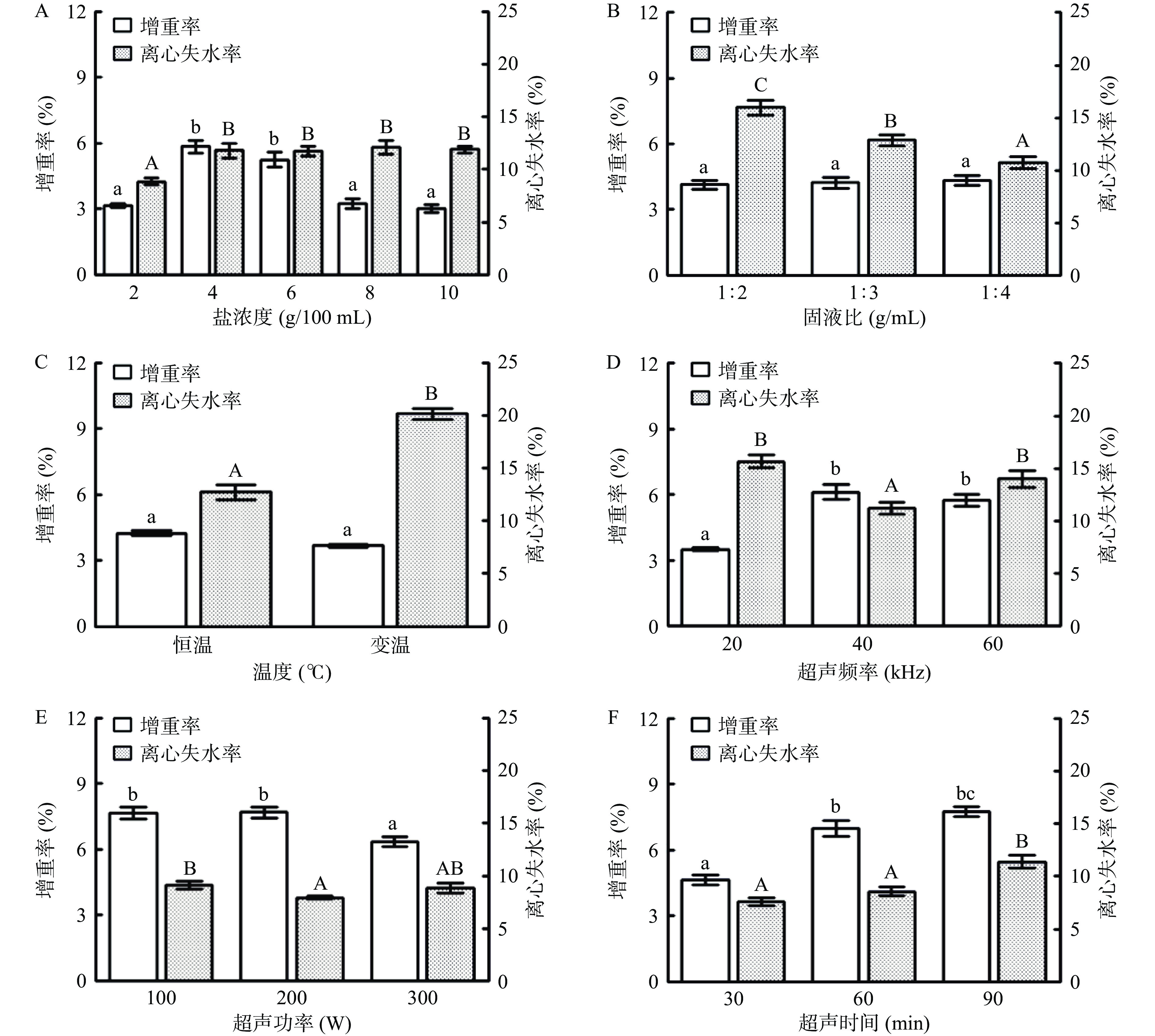
 下载:
下载:
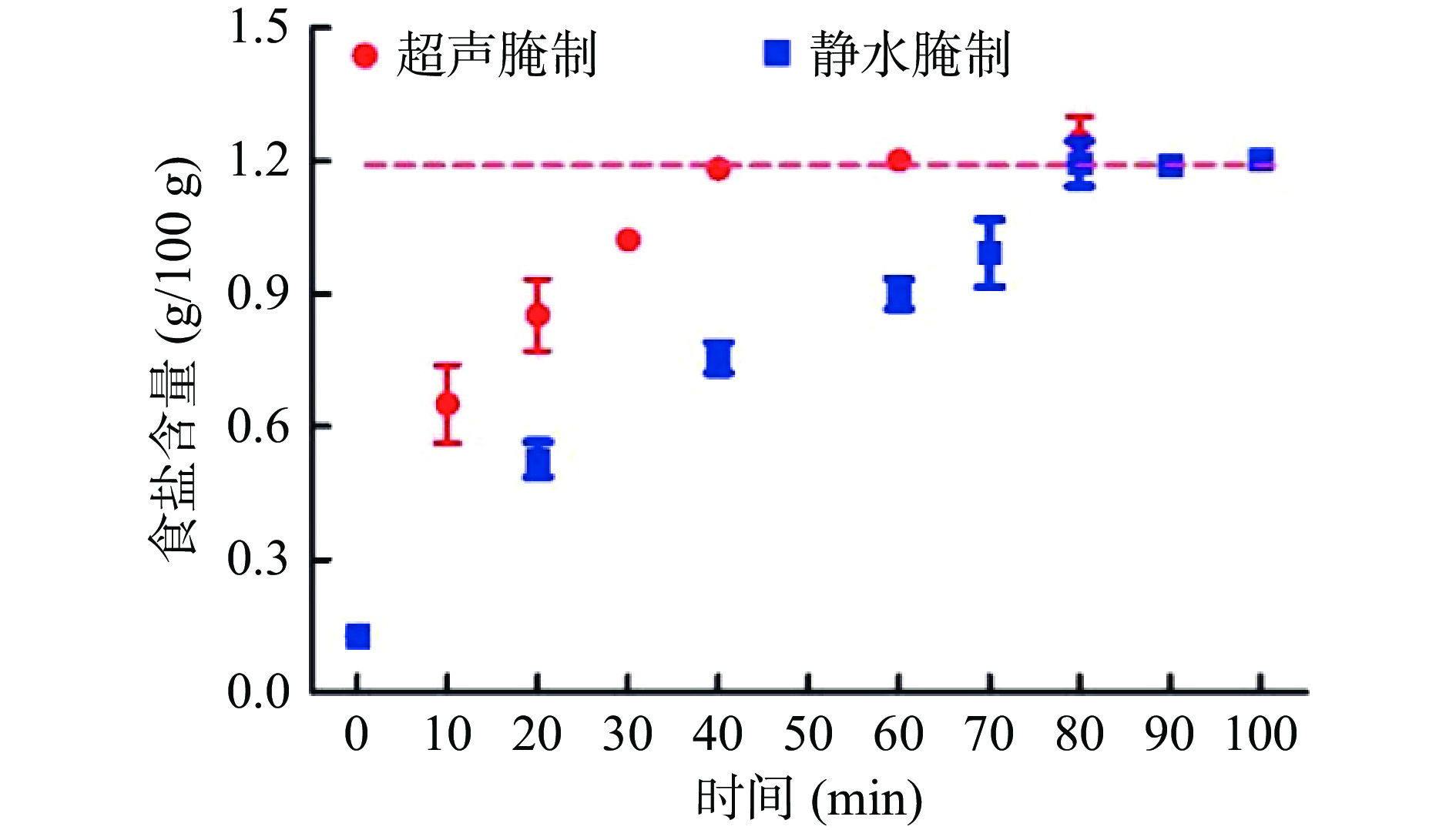
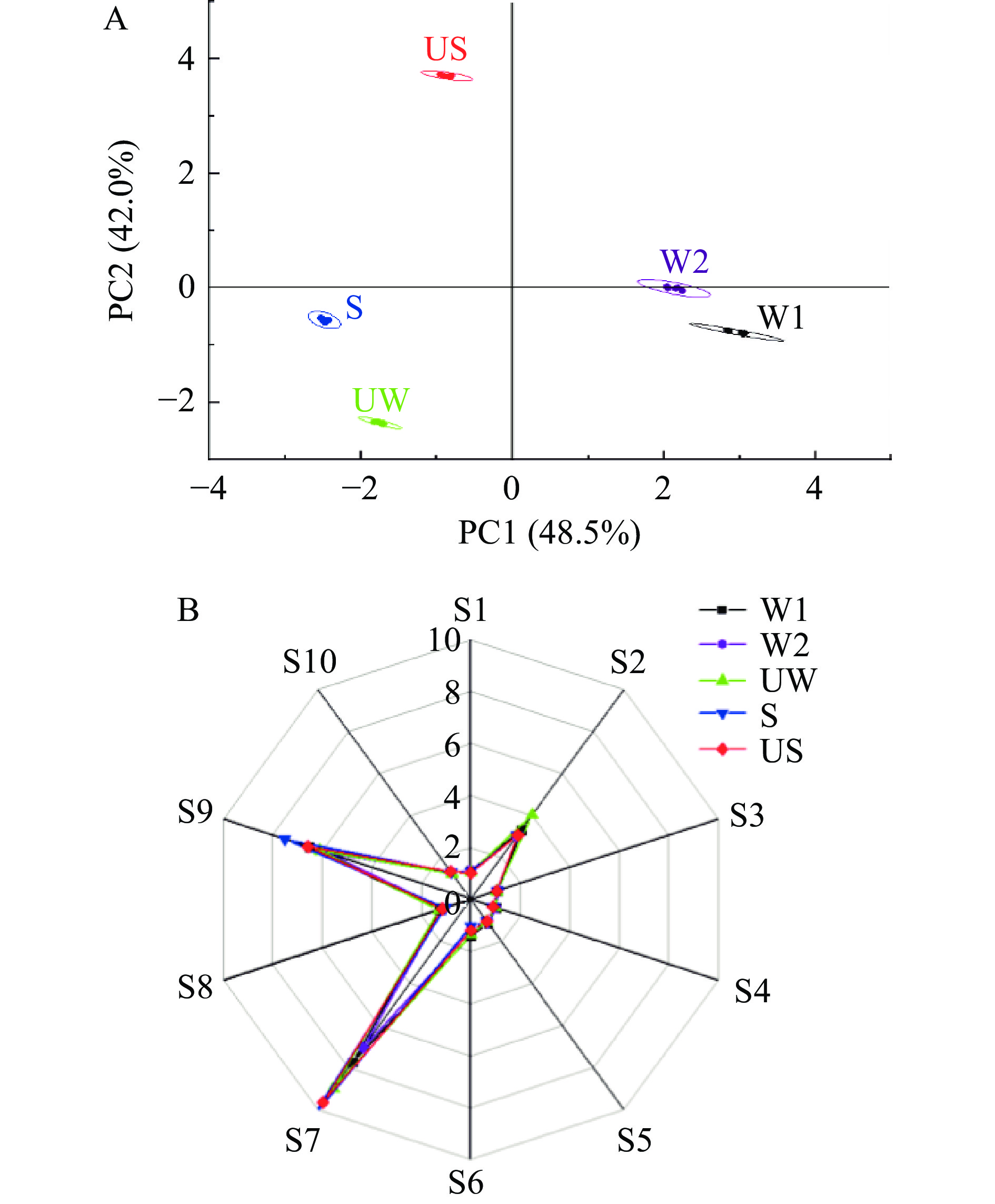
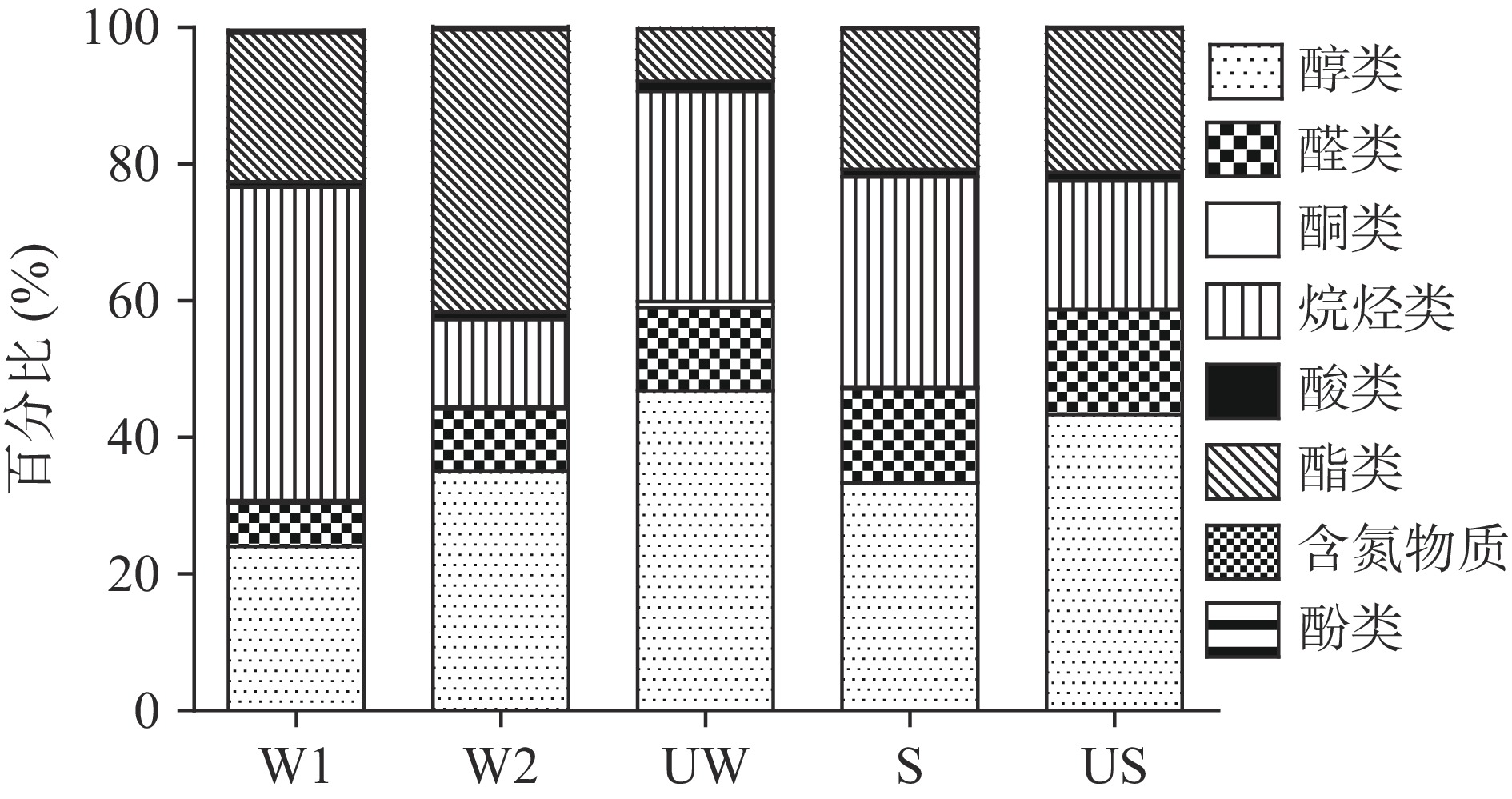
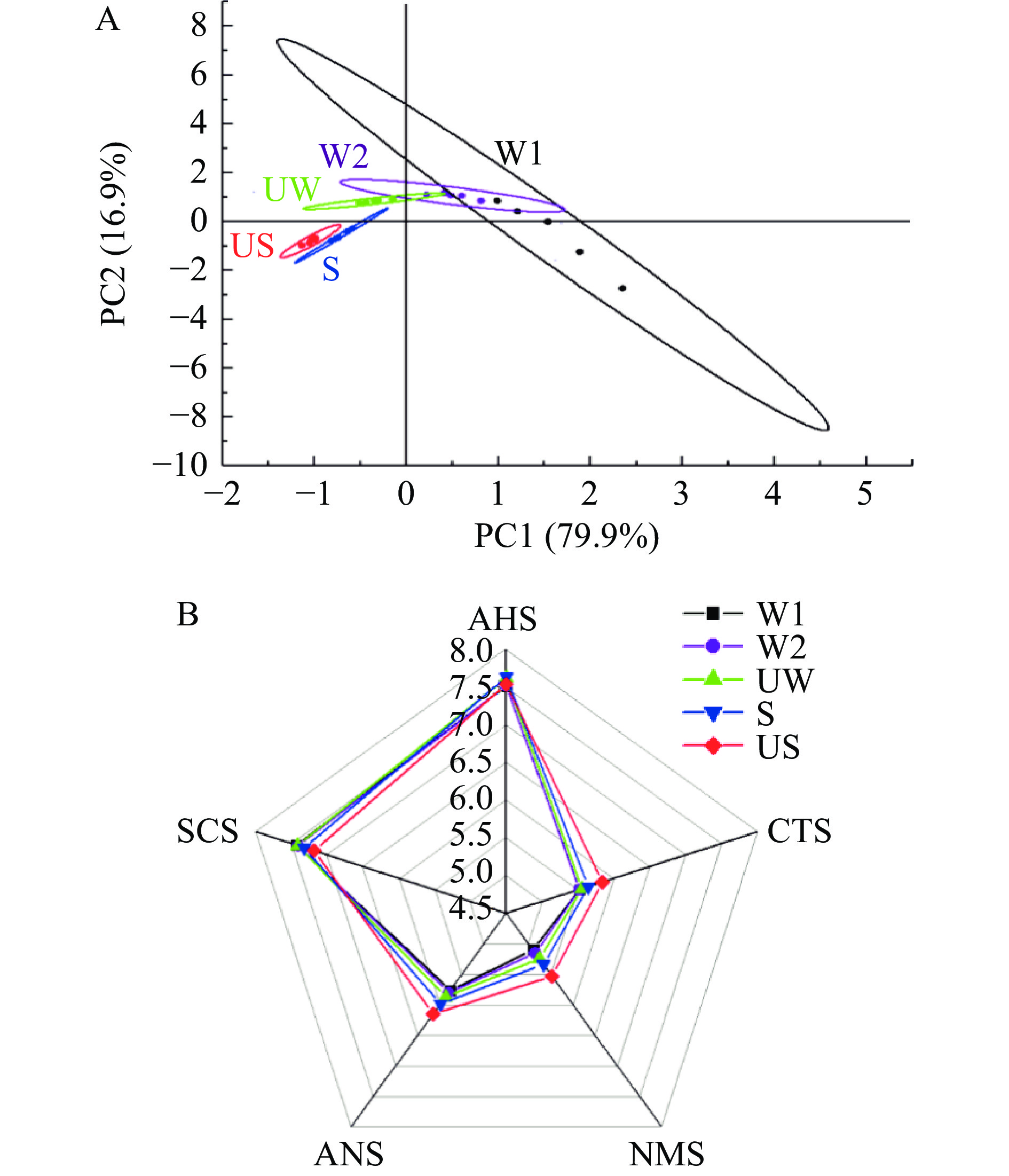
 下载:
下载:
